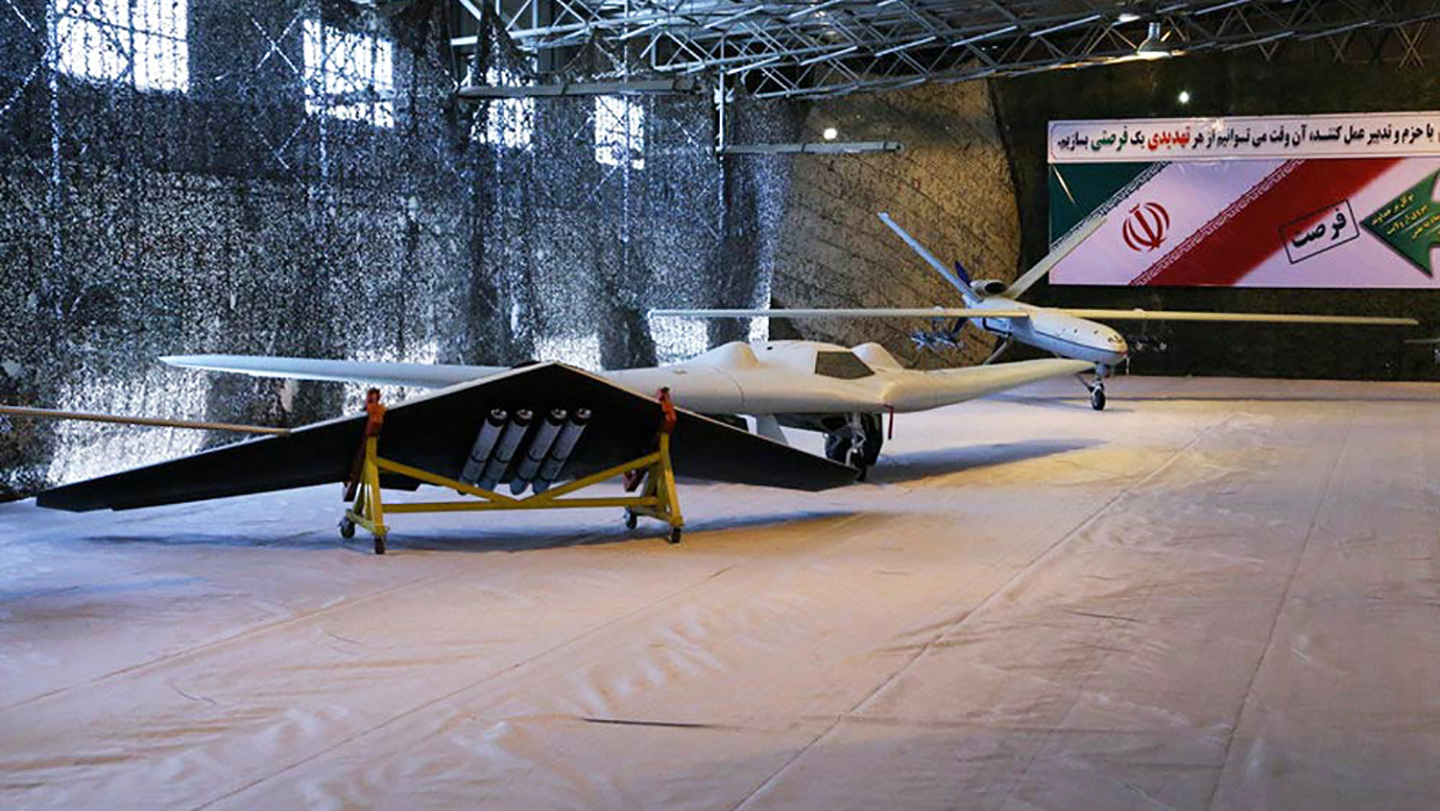Satellite imagery is said to show a Russian delegation viewing a small exhibition of Iranian-made armed drones in June as Moscow looks to backfill drone losses and expand its strike and surveillance capabilities for its war against Ukraine.
In a CNN report Friday, U.S. National Security Adviser Jake Sullivan reiterated intelligence assessments that Iran intends to supply Russia with “several hundred” drones, including weapons-capable drones.
Accompanying satellite imagery of Kashan Air Base showed a Shahed-129 drone parked at a hangar near a vehicle identified as the Russian delegation’s transport. Imagery further captured a Shahed-191 drone in flight about 1.75 kilometers from the base.
Sullivan said Russians followed up the visit, which he described as a “showcase,” with a subsequent trip to the base on July 5. At a September 2021 conference, Israeli Defense Minister Benny Gantz identified the Kashan base as being used to train “terrorists from Yemen, Iraq, Syria, and Lebanon” on Iranian-made drones for usage by Tehran-backed proxies in those regions, according to a report from Haaretz.
We wrote about the Russians’ reported interest in drones of the same category as the Bayraktar TB2, featuring both weapons pylons and targeting sensors, as well as suicide drones for one-way trips to the target and would it could mean for the conflict. You can read our coverage of that original report here.
Russia has used the smaller Orlan-10 drone extensively in Ukraine, particularly in a fire-direction role for artillery, and it has become a favored target of Ukrainian soldiers sporting both man-portable air defense systems (MANPADS) and specialized counter-UAS guns.
Before diving into the rest of today’s news from the war in Ukraine, The War Zone readers can get caught up on our previous rolling coverage here.
THE LATEST
The most recent update from the British Ministry of Defense noted that Ukrainian defenses have stiffened after retreating from Lysychansk, with subsequent Russian offensives failing repeatedly.
This comes as The New York Times reports Russian Defense Minister Sergei Shoigu is pressuring forces to “further intensify” operations across Ukraine after a pause.
The Institute for the Study of War (ISW) noted thus far this has meant only smaller and unsuccessful attacks in the Donbas, but these could expand in the coming days. However, ISW reported the 10-day pause was insufficient to recuperate Russian forces for a large-scale offensive.
Russian missile attacks have continued, with civilian casualties in Ukrainian cities growing. At least one cruise missile struck Odessa on Saturday, with a thick column of black smoke rising above the city throughout the morning.
The strike on Odesa comes several days after missiles hit the central Ukrainian city of Vinnytsia, doing considerable damage in the city center and killing more than 20 civilians.
Footage from the Donbas near Slovyansk showed Polish-supplied T-72MRs in action against Russian forces. These upgraded former Soviet export model T-72s can’t match the latest T-72B3 versions, or the upgraded T-80 and T-90 tanks used by the Russian Ground Forces, but in as fire support alongside infantry as it appears in this video, they’re still effective.
We wrote about these Cold War-era tanks in early April ahead of their transfer, and you can read more about them here.
There’s also this bit of psychological warfare reported in occupied Kherson. The ongoing attacks using M142 HIMARS are the new subject of leaflets reportedly posted by the Ukrainian resistance.
We wrote about the growing trend of HIMARS strikes turning nighttime to daytime with attacks on Russian ammunition dumps located deep behind the front lines occurring since their arrival in the theater. These strikes appeared to have significantly degraded Russia’s ability to maintain massive artillery barrages across Donbas. How long these results will hold is unclear, but a massive logistical operation is needed to maintain high-volume artillery use over such a wide region. Without shells being stored close to the front lines, this becomes extremely problematic.
We will continue to update this post until we state otherwise.
Contact the author: stetson.payne@thewarzone.com
